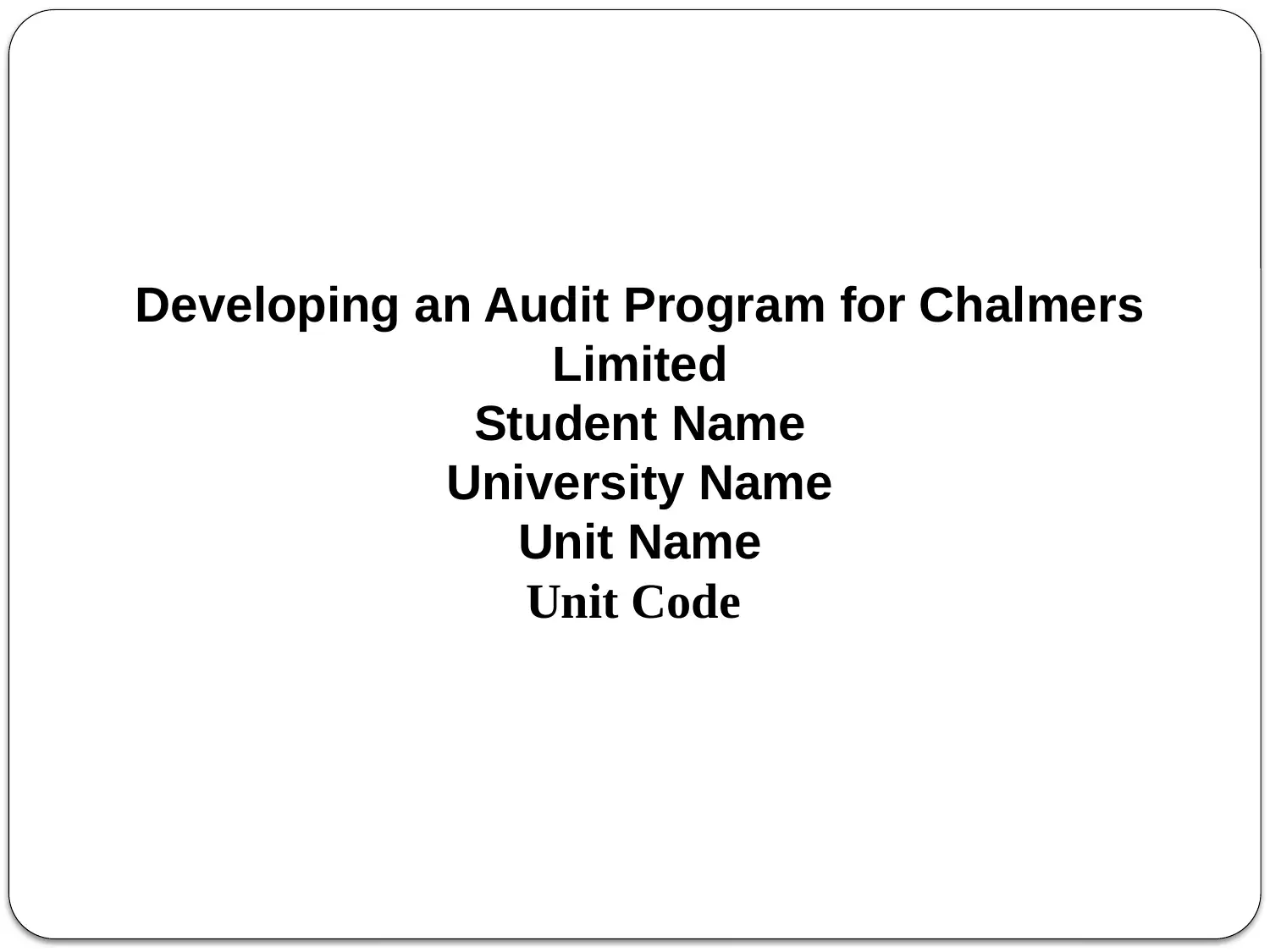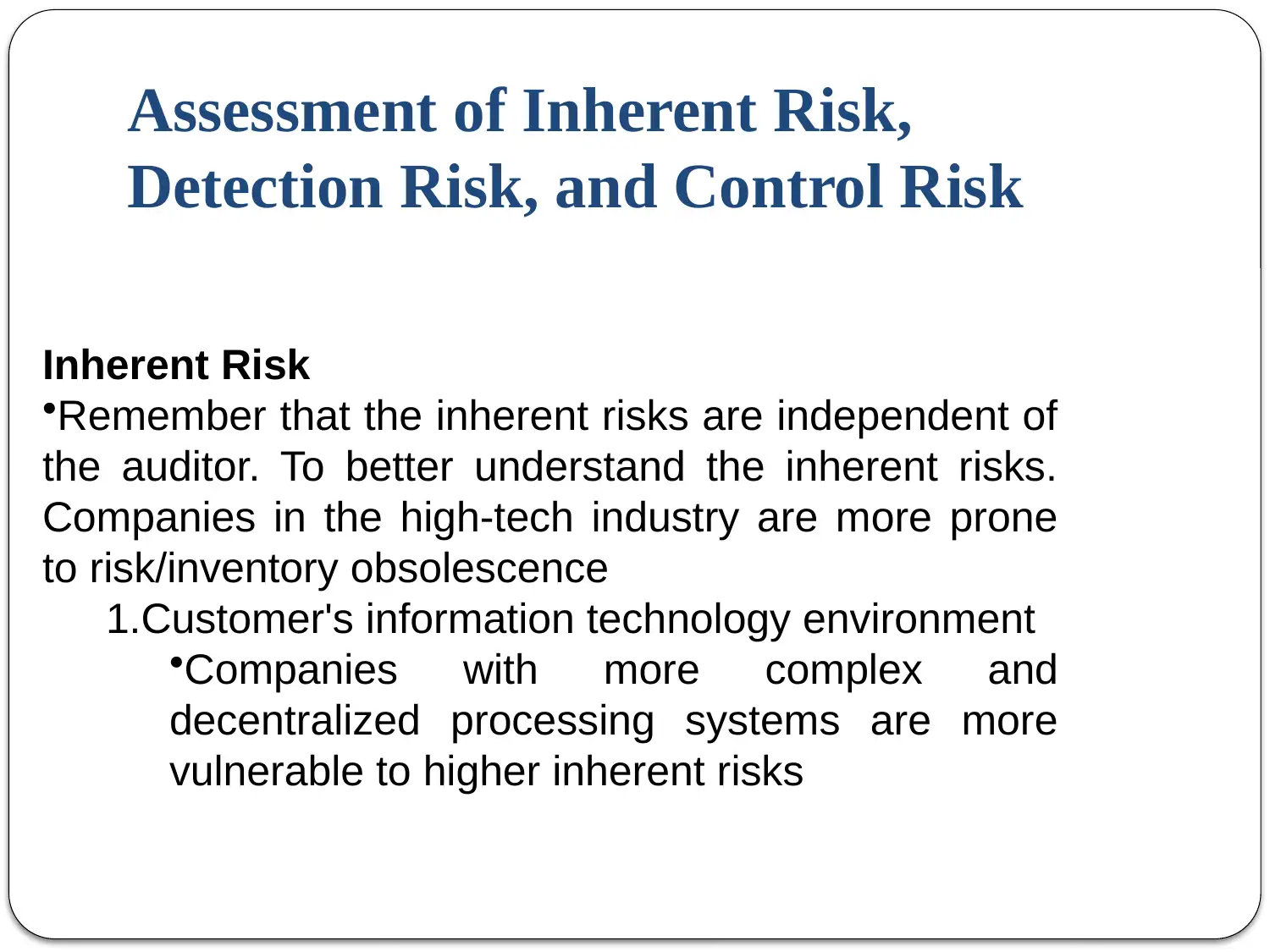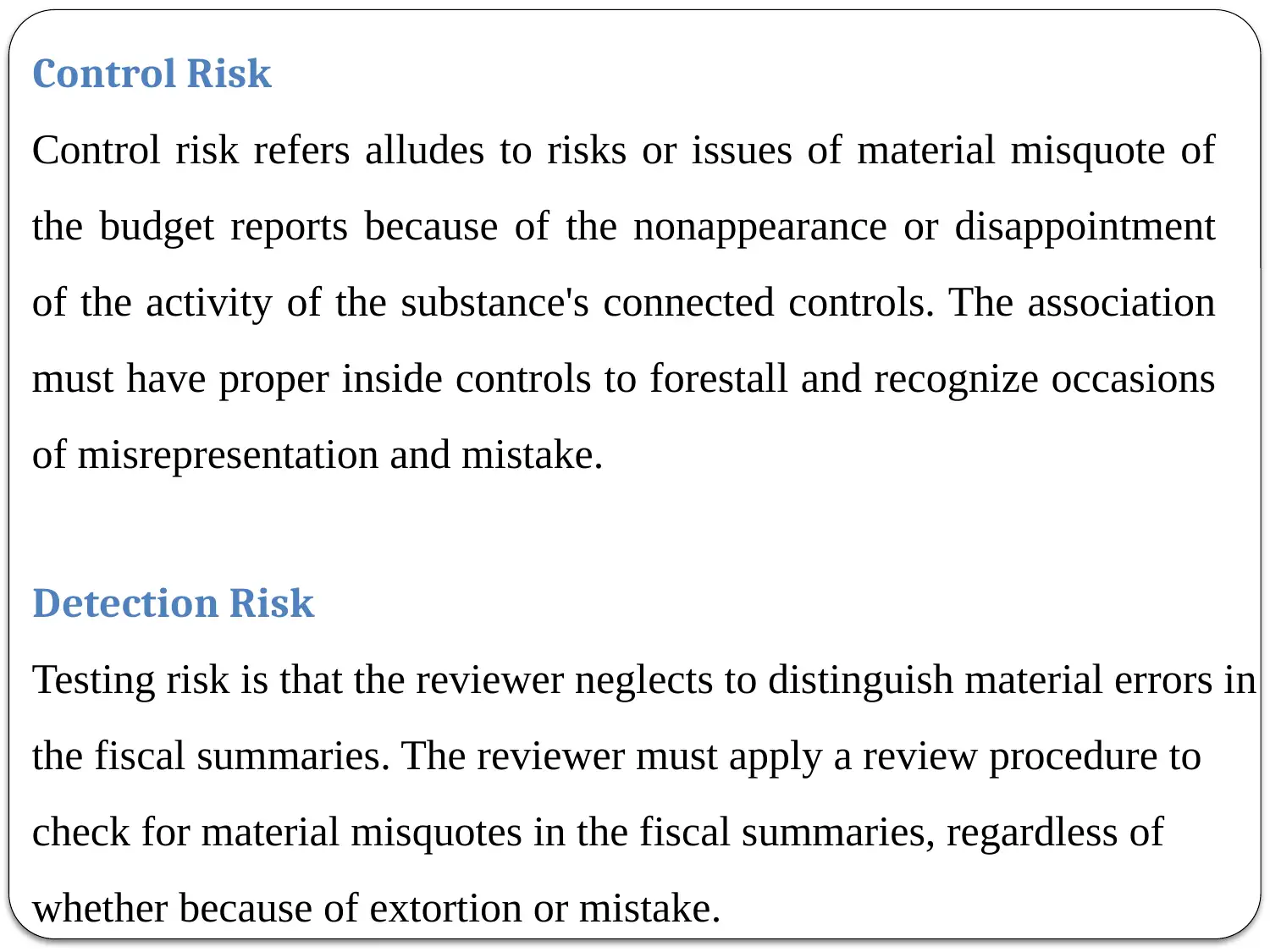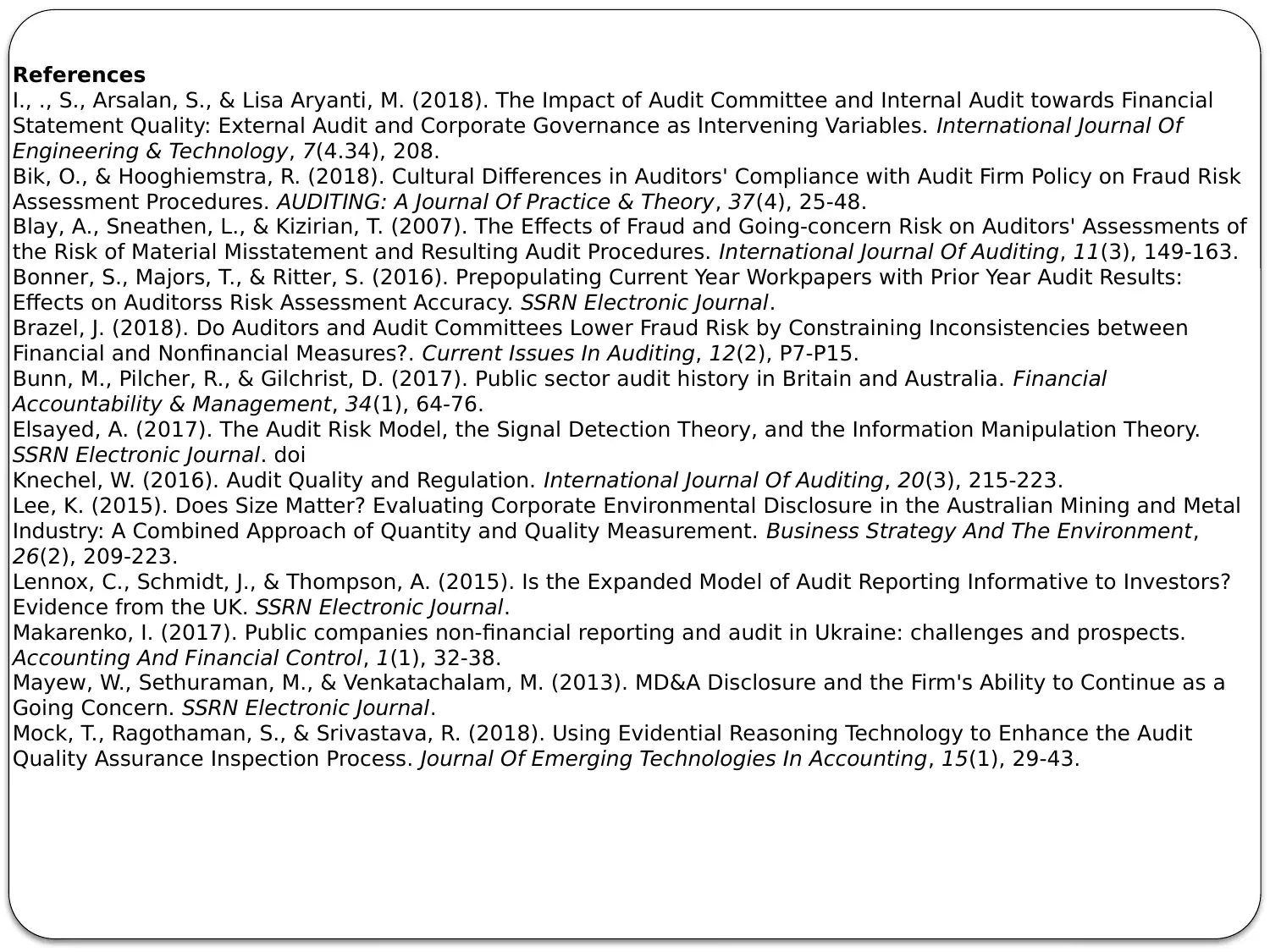Chalmers Limited Audit Program: Risk Assessment and Audit Procedures
VerifiedAdded on 2023/03/23
|10
|680
|33
Report
AI Summary
This report presents a detailed audit program developed for Chalmers Limited, focusing on risk assessment and planning. It begins by understanding the entity and its industry to identify key business risks and potential material misstatements in the financial report. The report considers factors affecting both inherent risk and control risk, applying the audit risk model [AR = f (IR, CR, DR)] to Chalmers Limited. It assesses the company's inherent risk and control environment, ultimately determining the appropriate risk rating. The audit program outlines substantive tests of balances to substantiate the ending balance of accounts at year-end. This document is available on Desklib, a platform that offers a range of study tools for students.
1 out of 10

















![[object Object]](/_next/static/media/star-bottom.7253800d.svg)